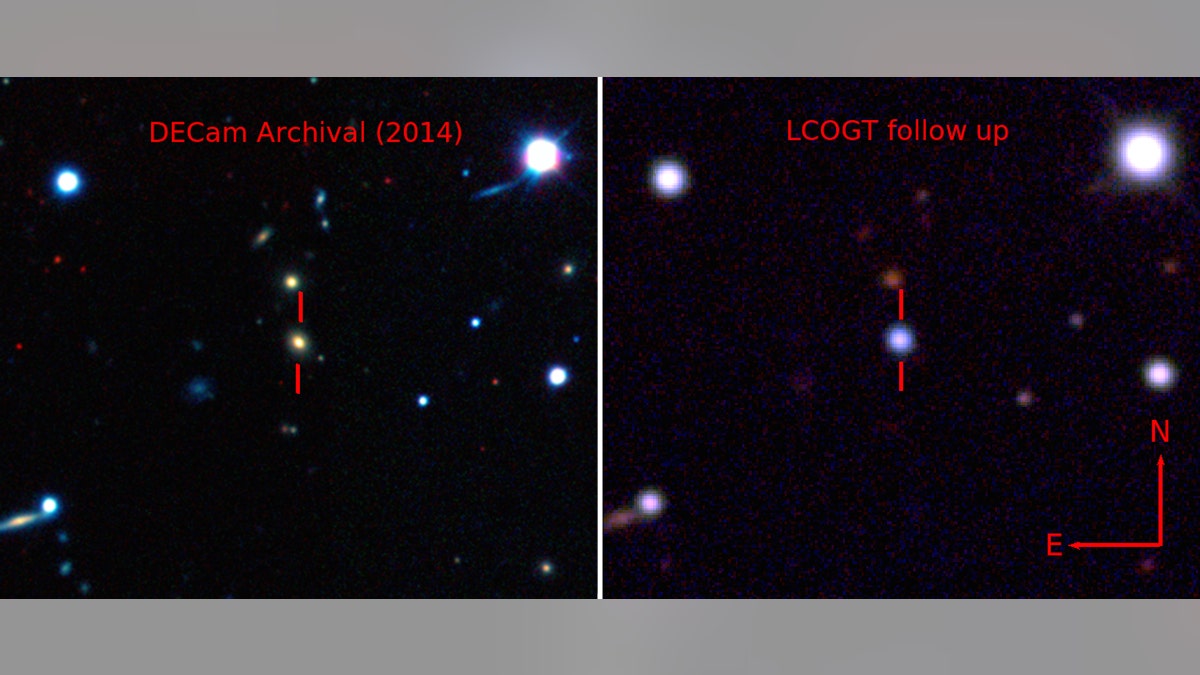
An artist's impression of the record-breakingly powerful, superluminous supernova ASASSN- 15lh as it would appear from an exoplanet located about 10,000 light years away in the host galaxy of the supernova. (Beijing Planetarium / Jin Ma))
Scientists may have spotted the most powerful supernova ever seen, some 3.8 billion light years away in deep space.
Named ASASSN-15lh, it looks like a huge ball of hot gas and is radiating the energy of hundreds of billions of Suns. Ten miles across at its center, this object is putting on quite a show, creating a cosmic explosion about 200 times more powerful than a typical supernova and more than twice as luminous as the previous record-holding supernova.
Related: NASA releases stunning image of a supernova's remnants
If that is enough to astound you, its explosion at its peak intensity was 570 billion times the brightness of the Sun. At that rate, its luminosity level is approximately 20 times the entire output of the 100 billion stars comprising our Milky Way galaxy.
“ASASSN-15lh is the most powerful supernova discovered in human history,” Subo Dong, an astronomer and a Youth Qianren Research Professor at the Kavli Institute for Astronomy and Astrophysics at Peking University and the lead author on a study on the supernova in the journal Science, said in a statement. “The explosion’s mechanism and power source remain shrouded in mystery because all known theories meet serious challenges in explaining the immense amount of energy ASASSN-15lh has radiated.”

Pseudo-color images showing the host galaxy before the explosion of ASASSN-15lh taken by the Dark Energy Camera (DECam) [Left], and the supernova by the Las Cumbres Observatory Global Telescope Network (LCOGT) 1-meter telescope network [Right]. (The Dark Energy Survey, B. Shappee and the ASAS-SN team)
ASASSN-15lh was first glimpsed in June 2015 by twin, telescopes in Cerro Tololo, Chile conducting the All Sky Automated Survey for SuperNovae (ASAS-SN), an international collaboration headquartered at Ohio State University.
Related: Supernova discovery reveals how the biggest, brightest stars die
“Every time in science we open up a new discovery space, exciting findings should follow," said Krzysztof Stanek, a professor of astronomy at Ohio State University and the co-Principal Investigator of ASAS-SN. “The trick is not to miss them.”
In the four months after it first exploded, so much energy beamed out of ASASSN-15lh that it would take our Sun in its current state more than 90 billion years to equal its emissions. By examining this bright and the slowly fading afterglow, astronomers learned much about ASASSN-15lh including the fact that the chemical elements scattered after the explosion were different than any of the other 200 supernovae observed.
ASASSN-15lh also has certain features consistent with “hydrogen-poor” (Type I) superluminous supernovae, which are one of the two main types of these epic explosions so named for lacking signatures of the chemical element hydrogen in their spectra, researchers said. ASASSN-15lh has also shown a rate of temperature decrease and radius expansion similar to some previously discovered Type I superluminous supernova.
J. Craig Wheeler, the Samuel T. and Fern Yanagisawa Regents Professor in Astronomy and Distinguished Teaching Professor, called the discovery “a very interesting event.”
“Many of these very luminous events result from a massive star that belches out a shell of matter and then explodes into it,” Wheeler told FoxNews.com in an email interview. “That picture works best when there is a blanket of hydrogen. This event falls in the class that have no hydrogen. Shell collision might still play a role, but another active possibility is that a powerful new-born neutron star pumps out the excess radiation. This event challenges even that model, so there will be a lot of head scratching.”
Related: Supernova seen through cosmic 'cigar smoke' by NASA telescope
One of the best theories explaining the massive amounts of energy coming from this supernova is that it could have spawned an extremely rare type of star called a millisecond magnetar, a rapidly spinning and very dense star with a very strong magnetic field.
"Very few events in nature are capable of providing the enormous brightness of this event and all are exotic," Stanford Woosley, an expert in supernovas at the University of California Santa Cruz but who did not take part in the study, said.
"If it is a supernova, we may be witnessing the birth of a "millisecond magnetar",a neutron star with a mass 1 1/2 times that of the sun rotating 1,000 times a second," he said. "Even here the maximum rotational energy before the neutron star would either fly apart or collapse to a back hole, is just a few times what was seen in light.and the efficiency for turning rotational energy into light would need to be quite high."
To help confirm the source of its energy as well as determine the exact location of ASASSN-15lh, the team plans to turn to the Hubble Space Telescope. With Hubble, Dong and colleagues will obtain the most detailed views yet of the aftermath of ASASSN-15lh’s stunning explosion.




















